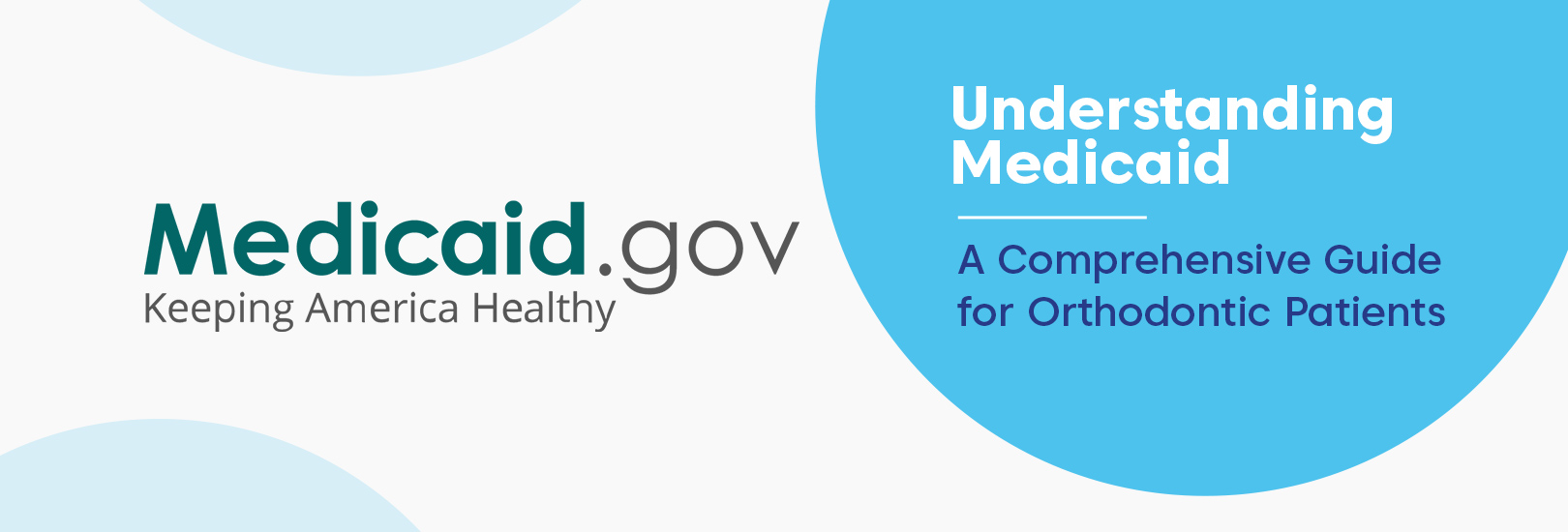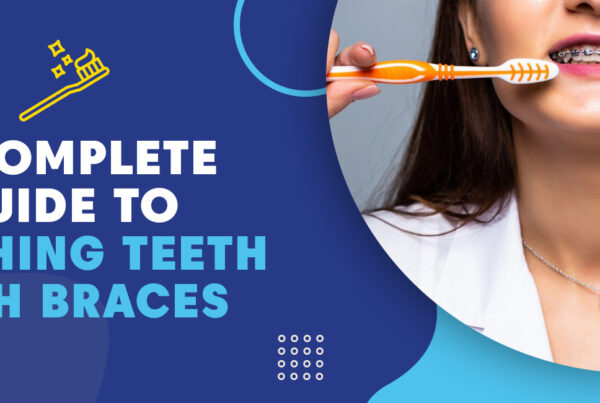- What Is Medicaid?
- Medicaid Coverage Criteria For Orthodontic Treatment
- What Benefits Come With Medicaid?
- What Are The Different Types Of Medicaid Insurance?
- Does Medicaid Cover Braces?
- Medicaid Plan Codes For Orthodontic Treatment
- The Application Process: Applying For Medicaid Orthodontic Coverage
- Understanding Medicaid-Approved Orthodontic Procedures
- Choosing An Orthodontist Who Accepts Medicaid
- Medicaid Coverage Limits
- Medicaid Exceptions For Medical Necessity: When Coverage Extends
- Appealing Medicaid Decisions: Your Rights And Procedures
- FAQs
- Resources And Contacts
Navigating the world of healthcare can often feel like a complex journey, especially when it comes to specialized treatments like orthodontic care. If you’re looking for Medicaid coverage for orthodontic care, you may have several questions. In this guide, we’ll explore the different types of Medicaid, discuss whether it’s a good insurance option, and shed light on age restrictions. By the end, you’ll be equipped with essential knowledge to make informed decisions about your orthodontic journey. Let’s get started and unravel the world of Medicaid in orthodontic care.
What is Medicaid?
Medicaid is a healthcare program administered by the government that aims to support individuals and families with low income. It provides comprehensive coverage for various medical services, including orthodontic treatment. To determine eligibility for coverage, Medicaid follows specific criteria and prerequisites.

This careful evaluation ensures that the program is targeted towards those who meet the necessary requirements and genuinely require orthodontic care.
Medicaid Coverage Criteria for Orthodontic Treatment
When it comes to orthodontic treatment, Medicaid follows certain guidelines and requirements to determine if an individual qualifies for coverage. So, who is eligible for Medicaid? To get the coverage for orthodontic treatment, you need to meet these criteria:
- Age Limit: Medicaid coverage for orthodontic treatment is limited to individuals under the age of 21. This is because Medicaid aims to prioritize early intervention and preventive care.
- Financial Standards: The financial eligibility criteria for Medicaid are designed to provide healthcare access to individuals with limited income and resources, ensuring that everyone can receive the necessary care regardless of their financial situation.
- Severe Physically Handicapping Malocclusion: Medicaid coverage for orthodontic treatment is specifically reserved for individuals with severe physically handicapping malocclusion. This condition refers to a misalignment of the teeth and jaw that significantly affects a person’s ability to speak, chew, or maintain proper oral hygiene.
What Benefits Come With Medicaid?
Access to Medicaid greatly benefits individuals or families who may have limited financial resources. Here are some advantages of Medicaid plans for orthodontic treatment:
- Enhanced Oral Health: Orthodontic treatment improves oral health and overall dental hygiene by addressing issues like misaligned teeth, improper bites, and crowded or spaced teeth. Correcting these concerns can help prevent gum diseases, cavities, and other potential oral health problems.
- Financial Support: Medicaid eliminates the burden of high out-of-pocket costs associated with orthodontic treatment. It covers the majority, if not all, of the expenses related to braces and other necessary dental services.
- Boosted Self-Confidence: Medicaid’s coverage for orthodontic treatment allows individuals to gain a confident and dazzling smile. Improved aesthetics positively influence self-esteem, leading to better social interactions and increased self-confidence.
What Are The Different Types Of Medicaid Insurance?
Medicaid programs exhibit variations from state to state; however, the subsequent three Medicaid programs are universally accessible to Medicare beneficiaries across all states.

Here are different types of Medicaid insurance plans:
- Aged, Blind, and Disabled (ABD) Medicaid: Individuals enrolled in ABD Medicaid benefit from a wide spectrum of health services, encompassing medical appointments, hospital care, and medical equipment. This Medicaid program might also assist in covering your Medicare cost-sharing responsibilities. However, it’s worth mentioning that ABD Medicaid might not offer comprehensive coverage if you require extended long-term care services.
- Medicaid Home and Community-Based Services (HCBS) Waiver Programs: HCBS waiver programs furnish comprehensive health coverage along with specific services designed to facilitate your continued residence in your home or a community-based environment, such as an assisted living facility. To become eligible, you must meet state-specific functional criteria established by your respective state.
- Institutional Medicaid: Enrollees of Institutional Medicaid, aimed at individuals residing in nursing homes, receive coverage for an array of nursing home services encompassing room and board, nursing care, personal care, and therapeutic interventions. Eligibility relies on your requirement for a nursing home level of care or meeting the functional criteria delineated by your state.
Does Medicaid cover braces?
Medicaid coverage for braces varies by state, typically encompassing emergency dental services that may include braces when deemed medically necessary. However, the definition of “medically necessary” is determined by each state individually. To determine a child’s eligibility for Medicaid coverage for braces, an evaluation process employs an orthodontic severity scoring system to assess the extent of their orthodontic condition.
The American Association of Orthodontists outlines medically necessary orthodontic care as interventions aimed at preventing, diagnosing, minimizing, correcting, or resolving malocclusions, including craniofacial irregularities and anatomical deviations causing discomfort, functional impairment, or physical deformity.
Medicaid Plan Codes For Orthodontic Treatment
Medicaid plan codes for orthodontic treatment are essential for accessing the needed dental services for eligible beneficiaries. Orthodontic Experts accept Medicaid and offer various Medicaid plan codes for orthodontic treatment. Let’s explore some of these codes:

D8210: Removable Appliance Therapy
This code covers the use of removable appliances, such as retainers or aligners, to correct minor orthodontic issues. Removable appliance therapy provides a convenient solution for patients requiring mild tooth straightening or alignment.
D8220: Fixed Appliance Therapy
Fixed appliance therapy involves the use of braces to address more complex dental cases. This code covers the cost of installing and maintaining Traditional Metal Braces, which consist of brackets, wires, and elastics to realign teeth gradually.
D8060: Interceptive Orthodontic Treatment of the Transitional Dentition
This particular code focuses on early orthodontic intervention for children. Interceptive orthodontic treatment aims to guide jaw growth and tooth development to prevent severe malocclusion in the future.
D8080: Comprehensive Orthodontic Treatment of Adolescent Dentition
Comprehensive orthodontic treatment for adolescent dentition involves correcting teeth misalignment during the teenage years when permanent teeth have fully erupted. This code covers a full course of orthodontic treatment suitable for adolescents.
The Application Process: Applying for Medicaid Orthodontic Coverage
Prior to Medicaid covering the cost of braces, it’s necessary for a licensed orthodontist to assess and confirm that your dental condition justifies the need for this treatment. In the case of adults, there’s a requirement to demonstrate that opting for dental braces presents the most cost-effective and efficient approach to addressing a non-dental health concern. Orthodontic Experts offers a no-cost consultation so that you can make an informed decision.
To initiate the process of ascertaining whether Medicaid covers orthodontic treatment in your region, follow these steps:
- Determine if your state’s Medicaid program incorporates an orthodontic benefit.
- Consult your orthodontist to assess if you qualify for Medicaid.
- Identify and schedule treatment with an orthodontist who accepts Medicaid as a form of payment.
Understanding Medicaid-Approved Orthodontic Procedures
Medicaid typically covers a range of orthodontic procedures, providing assistance to eligible individuals for improving their dental health. Common procedures covered by Medicaid include braces and retainers. However, Medicaid does not extend coverage for orthodontic treatment for cosmetic purposes. This means that braces will not be covered by the program to address appearance-related concerns such as teeth spacing, overcrowding, overbites, or underbites. Understanding the distinct criteria and purposes for which Medicaid covers braces is crucial in determining eligibility for orthodontic treatment through the program.

Choosing an Orthodontist Who Accepts Medicaid
Once you have a good understanding of the different types of Medicaid insurance and orthodontic procedures covered by Medicaid, it is essential to find a qualified orthodontist who accepts Medicaid. Here are some valuable tips to help you select the right provider for your orthodontic treatment:
- Research and Review: Start by researching orthodontists in your area who accept Medicaid. Look for credible sources such as the official Medicaid website or directories specifically listing orthodontists that accept Medicaid in your region. Reading reviews and getting recommendations from family, friends, or healthcare professionals can also be helpful.
- Experience with Medicaid Patients: It is important to select an orthodontist who has experience working with Medicaid patients. Medicaid has specific requirements, paperwork, and processes that a knowledgeable orthodontist can navigate more effectively. This will result in a smoother treatment process for you and better communication between the orthodontist and Medicaid.
- Consultation and Treatment Plan Schedule consultations with orthodontists who accept Medicaid to discuss your treatment needs and goals. During these consultations, ask questions about their experience working with Medicaid patients, the different treatment options available to you, and the estimated cost of the treatment. A good orthodontist will take your specific needs into account and provide you with a detailed treatment plan that aligns with Medicaid coverage.
- Location and Accessibility: When choosing an orthodontic office, it’s important to consider its location and accessibility. Since you’ll need to visit the orthodontist multiple times during your treatment, opting for a conveniently located clinic will make things more convenient for you. It’s also worth considering factors such as office hours and appointment flexibility that align with your schedule and lifestyle.
- Financing Options: Orthodontic treatment can be a substantial financial commitment, even with Medicaid coverage. It’s essential to have a conversation with the orthodontist’s office about the available financing options. They may provide flexible payment plans or guidance on navigating the Medicaid reimbursement process to help reduce out-of-pocket costs for you.
Medicaid Coverage Limits
Medicaid coverage for orthodontic treatment has limitations on both the length and extent of the treatment. While Medicaid acknowledges the significance of orthodontic care, funding constraints may impose certain restrictions. It is crucial to be aware of these limitations in order to make well-informed decisions regarding your treatment.
- Duration of Coverage: Medicaid coverage for orthodontic treatment is typically limited in duration. The length of coverage can differ depending on the state and the severity of the dental issue. Generally, Medicaid covers orthodontic treatment for a necessary period of time to address the dental problem and achieve proper teeth alignment and function. To know the specific time limits in your state, it is crucial to consult with your orthodontist and Medicaid provider.
- Scope of Treatment: Medicaid coverage also has limitations on the scope of orthodontic treatment. These restrictions may include specific dental conditions or age groups. For instance, Medicaid may only cover orthodontic treatment for children with severe malocclusions or individuals with a cleft palate. Furthermore, certain treatment options like clear aligners or lingual braces might not be covered by Medicaid. It is important to understand the scope of covered treatments in order to consider all available options when making decisions about your orthodontic care.
Medicaid Exceptions for Medical Necessity: When Coverage Extends
Despite the coverage limits, Medicaid does recognize the importance of addressing certain oral health conditions with orthodontic treatment. Therefore, exceptions can be made due to medical necessity. If your orthodontic treatment falls within one of these exceptions, you may be eligible for extended coverage. Some scenarios where exceptions may be considered include:

- If your dental condition affects your ability to speak, eat, or perform daily activities, Medicaid may extend coverage to address these functional limitations.
- Cases involving craniofacial abnormalities that impact speech or cause physical pain could warrant exceptions.
- Individuals with traumatic injuries or congenital conditions affecting dental health might also qualify for exceptions to ensure they receive appropriate orthodontic interventions.
Appealing Medicaid Decisions: Your Rights and Procedures
If you need affordable braces and have Medicaid coverage, Orthodontic Experts is the right place for you. We are a trusted orthodontic practice that understands the importance of offering high-quality treatment to individuals who rely on this healthcare program. Our dedicated team of orthodontists that accept Medicaid are committed to delivering exceptional care and creating beautiful smiles.
In certain instances, your application for Medicaid orthodontic coverage may be rejected. However, it is crucial to understand that you have rights and can pursue options for appeal. If you believe that the decision was made incorrectly or if new information has emerged that could influence the coverage determination, you can take the following steps:
Step 1: Review the Denial letter Take the time to carefully go through the denial letter you receive from Medicaid. This letter will outline the specific reasons for the denial and any supporting documentation that may be required during the appeal process.
Step 2: Gather Supporting Documents Collect any necessary supporting documents that can strengthen your case. This may include additional dental records, X-rays, or letters from healthcare providers that explain the medical necessity of orthodontic treatment.
Step 3: Contact Medicaid. Get in touch with your local Medicaid office to get information about the appeals process and any additional forms or requirements that need to be completed. Make sure to follow any deadlines provided by Medicaid to ensure a seamless appeals process.
Step 4: Submit the Appeal Prepare a thoughtful and comprehensive appeal letter that addresses the denial of your request. Make sure to include all relevant documentation to support your case. Clearly state your reasons for appealing, emphasizing the medical necessity and providing persuasive arguments as to why you believe the denial should be overturned.
Step 5: Await a Decision After submitting your appeal, Medicaid will carefully review your case and make a determination. It’s important to understand that this process may take some time, so it’s crucial to be patient and persistent while advocating for your orthodontic coverage.
FAQs
What does Medicaid Pay for?
Medicaid has the potential to cover orthodontic treatment, specifically for eligible individuals, particularly children with orthodontic needs related to their health. It’s important to note that the extent of Medicaid’s coverage for orthodontics may vary by state. To obtain accurate information regarding coverage in your area, it is recommended to contact your local Medicaid office.
Can I get Medicaid at 62 years of age?
Medicaid eligibility primarily hinges on factors such as income and asset limits. Additionally, age and disability are taken into account. It’s important to note that age alone doesn’t determine Medicaid eligibility. However, individuals who are 62 years old may still be eligible if they meet specific income requirements and criteria outlined by their state’s Medicaid program.
Where can I find affordable braces with Medicaid Near Me?
If you’re searching for affordable braces covered by Medicaid in your area, look no further than Orthodontic Experts. As a trusted orthodontic practice that accepts Medicaid, we prioritize providing high-quality orthodontic treatment to individuals who depend on this healthcare program. Our comprehensive range of services includes traditional metal braces, rose gold braces, and clear aligners. Our team of dedicated orthodontists who accept Medicaid is committed to delivering exceptional care and helping you achieve a beautiful smile.
What does Medicaid not cover?
While Medicaid covers a comprehensive range of medical services, there are certain treatments and procedures that may not be covered. For example, elective cosmetic procedures, such as teeth whitening, are generally not covered by Medicaid. Additionally, some states may have limitations on orthodontic services, such as age restrictions or specific criteria for coverage. It’s advisable to contact your local Medicaid office or consult with our orthodontists to get detailed information about what Medicaid covers and what it doesn’t cover in your specific area.
Where can I find an orthodontist that accepts Medicaid in Illinois?
If you are looking for an orthodontist that accepts Medicaid in Illinois, look no further than Orthodontic Experts. With multiple locations throughout Illinois, including Chicago, Mundelein, Algonquin, and others, Orthodontic Experts has established itself as a leader in orthodontic care. Our experienced orthodontists have a comprehensive comprehension of Medicaid coverage and are committed to tailoring treatment plans to the individual needs of each patient.
Resources and Contacts
For individuals in search of additional support and information regarding different types of Medicaid orthodontic coverage, a wealth of valuable resources and contacts are available. A comprehensive starting point can be found at www.medicaid.gov, where official guidelines and details about Medicaid’s orthodontic coverage are provided. Furthermore, for personalized assistance and expert guidance, visit www.orthodonticexprts.com and let our knowledgeable staff help you!










